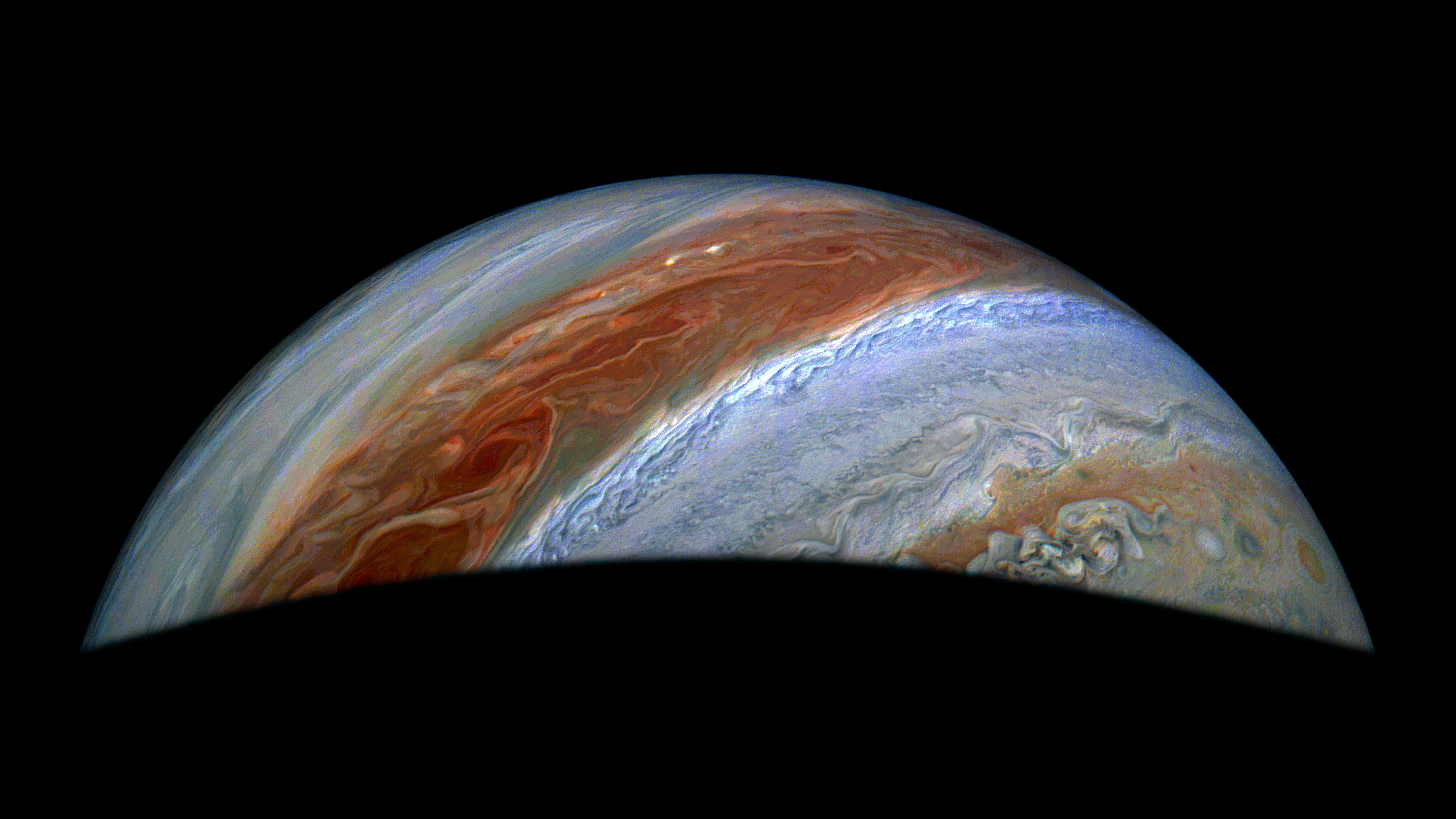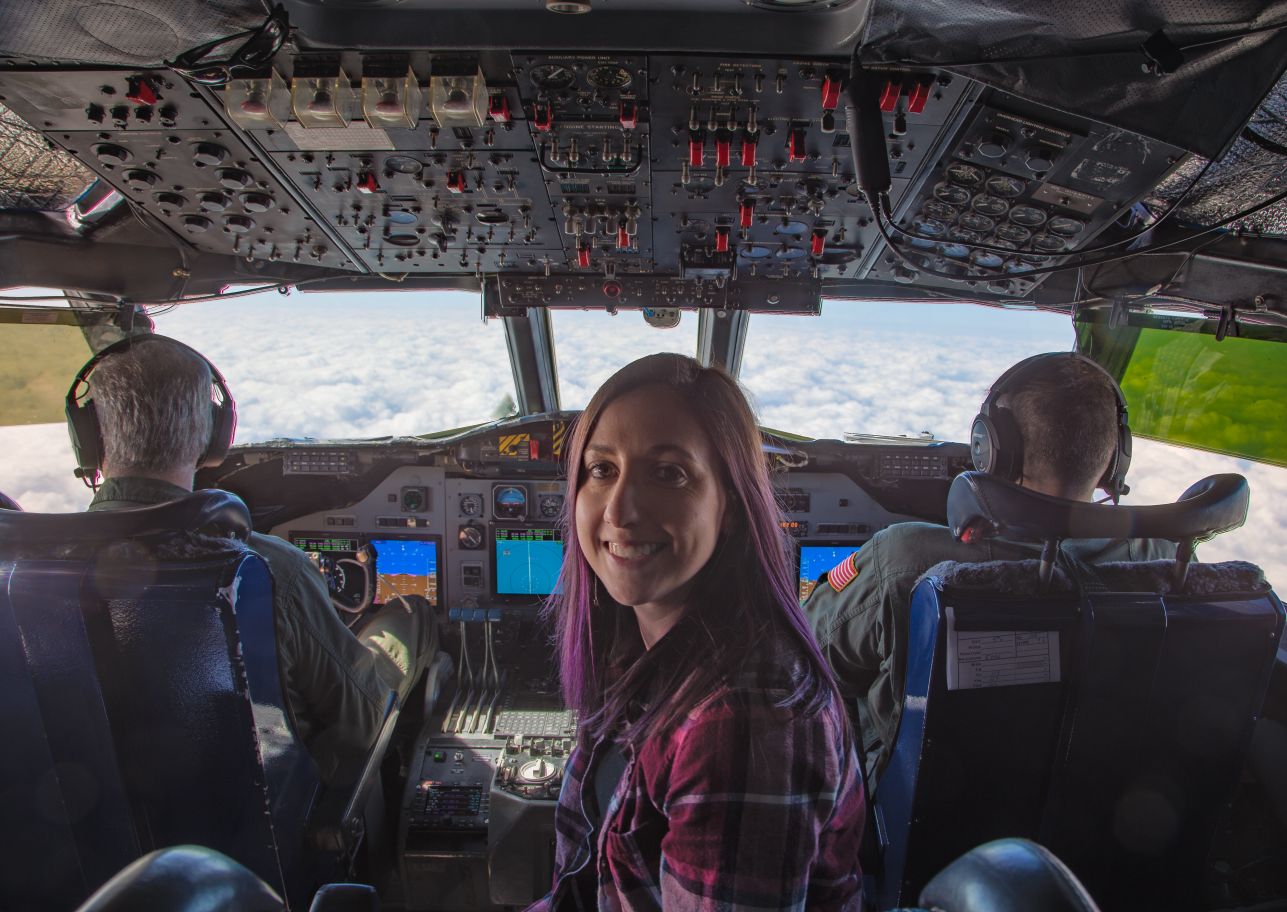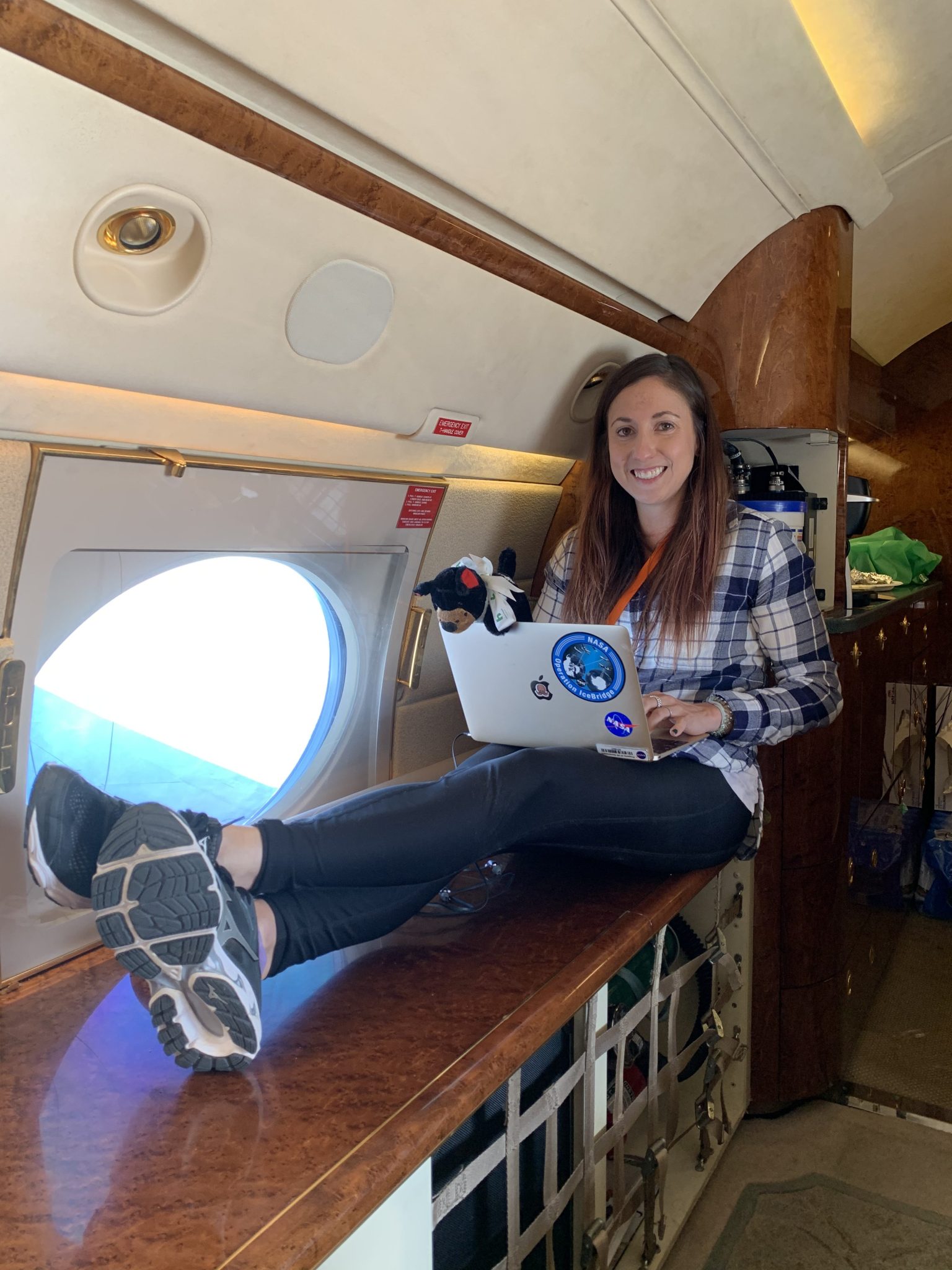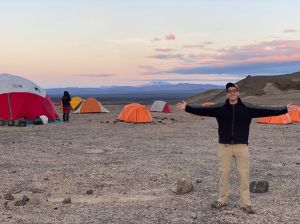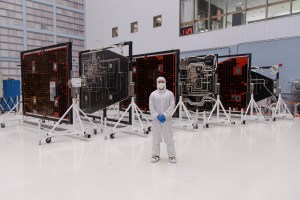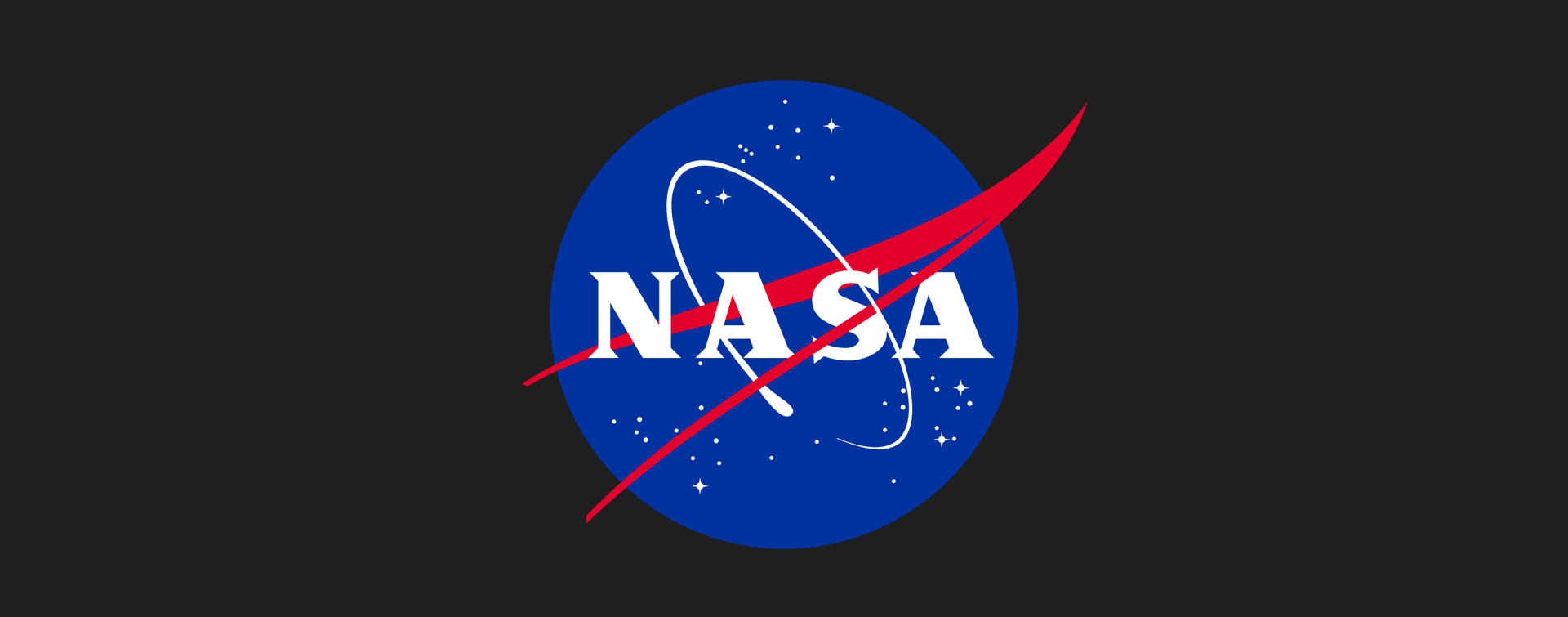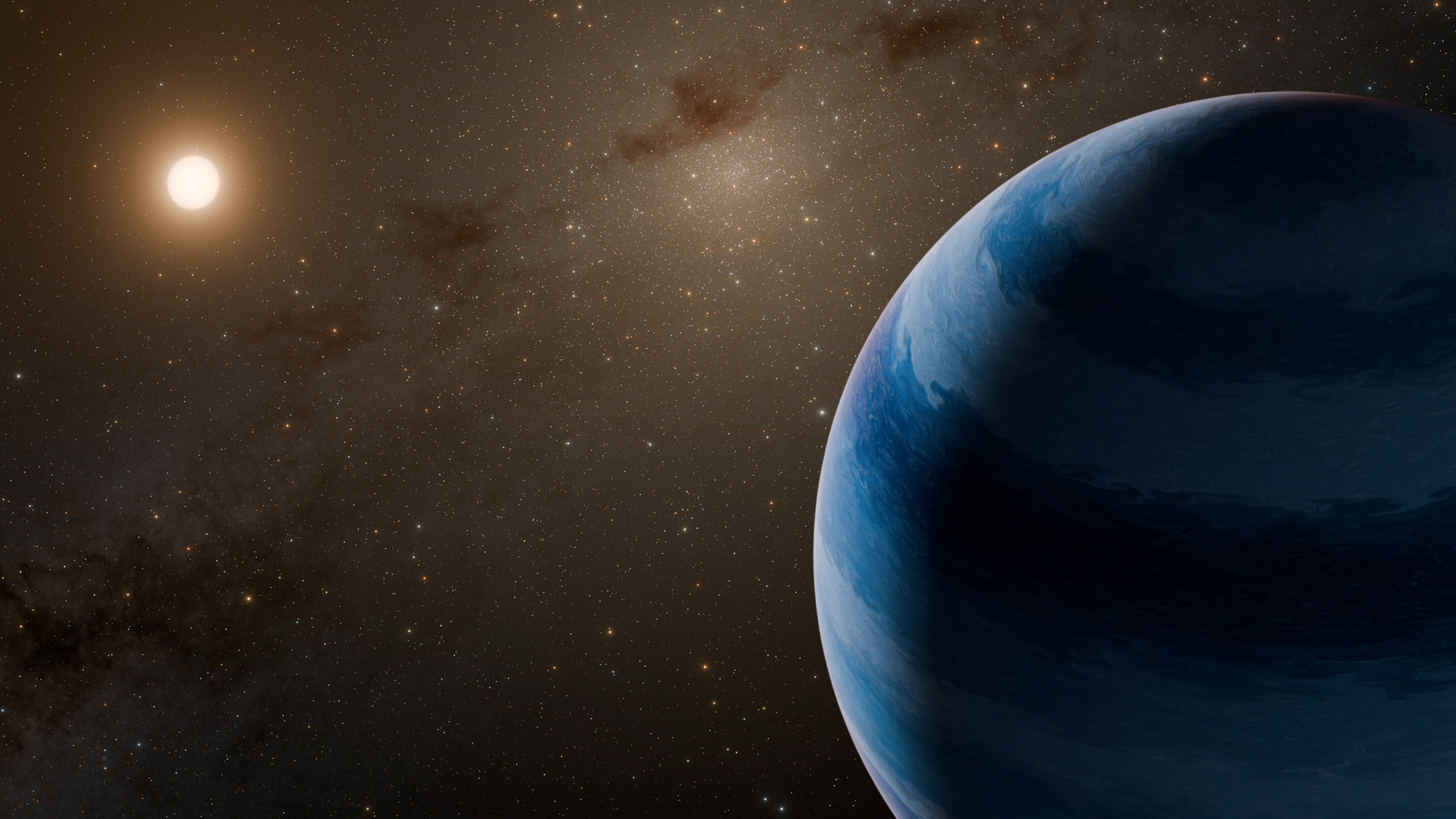Childhood Snow Days Transformed Linette Boisvert into a Sea Ice Scientist
Linette Boisvert turned a childhood love of snow into a career as a sea ice scientist studying climate change. Name: Linette BoisvertTitle: Assistant Lab Chief, Cryospheric Sciences Branch, and Deputy Project Scientist for the Aqua SatelliteFormal Job Classification: Sea Ice ScientistOrganization: Cryospheric Science Branch, Science Directorate (Code 615) What do you do and what is most interesting […]

Linette Boisvert turned a childhood love of snow into a career as a sea ice scientist studying climate change.
Name: Linette Boisvert
Title: Assistant Lab Chief, Cryospheric Sciences Branch, and Deputy Project Scientist for the Aqua Satellite
Formal Job Classification: Sea Ice Scientist
Organization: Cryospheric Science Branch, Science Directorate (Code 615)
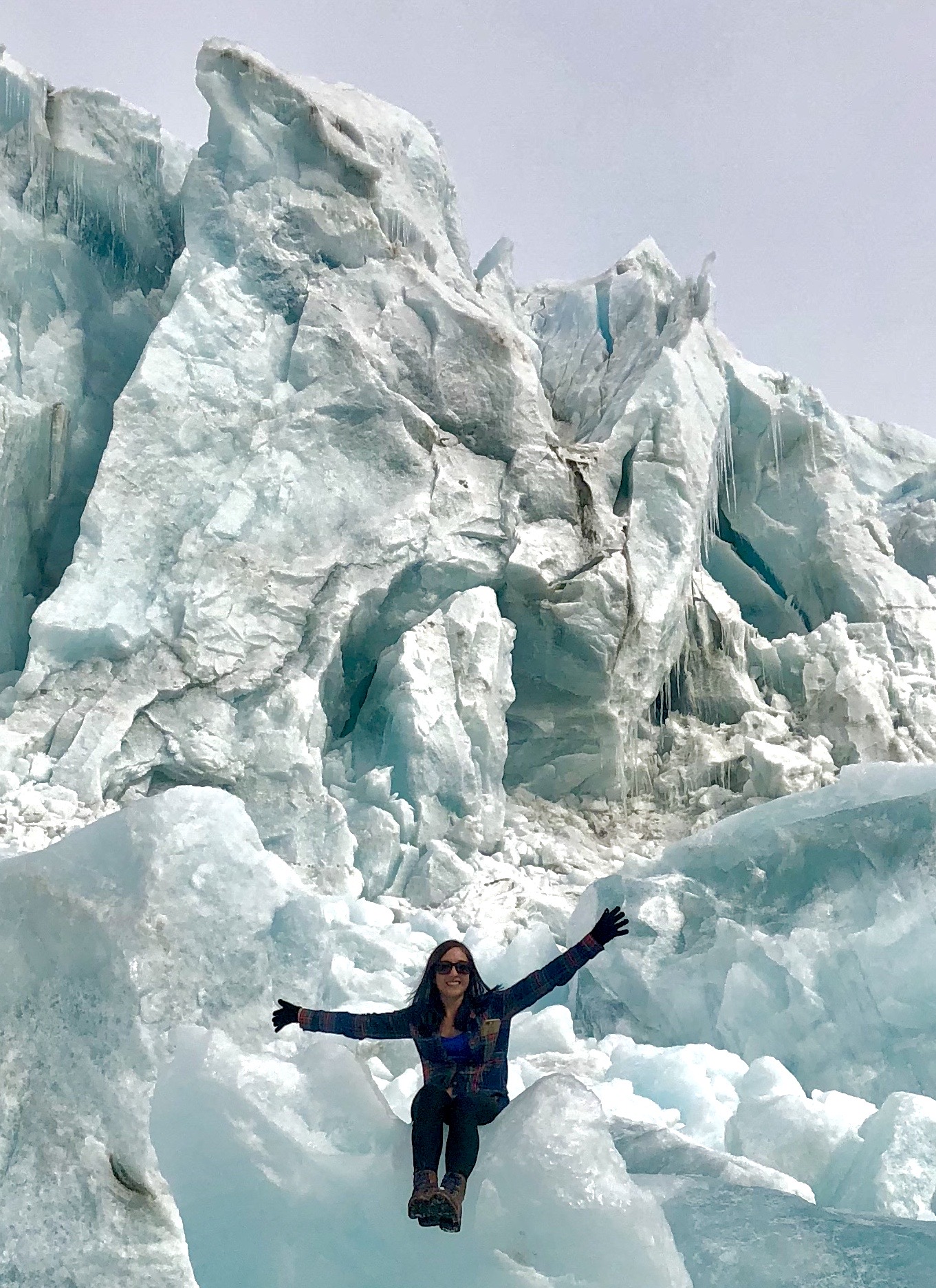
What do you do and what is most interesting about your role here at Goddard?
As a sea ice scientist, I study interactions between the sea ice and the atmosphere. I’m interested in how the changing sea ice conditions and loss of Arctic ice are affecting the atmospheric conditions in the Artic.
Why did you become a sea ice scientist? What is your educational background?
I grew up in Maryland. When it snowed, school was cancelled so I loved winter weather, and I was fascinated how weather could impact our daily lives. One of my undergraduate classes had a guest lecturer talk about the Arctic and that is when decided that I wanted to become an Arctic scientist. This also coincided with the Arctic sea ice minimum in 2007, at the time, a record low.
In 2008, I got a B.S. in environmental science with a minor in math from the University of Maryland, Baltimore County (UMBC). I received my master’s and, in 2013, got a Ph.D. in atmospheric and oceanic sciences from the University of Maryland, College Park.
How did you come to Goddard?
My doctorate advisor worked at Goddard. In 2009, he brought me into Goddard’s lab to do my Ph.D. research. I became a post-doctorate in 2013, an assistant research scientist in 2016 (employed by UMD/ESSIC) and, in 2018, a civil servant.
What is the most interesting field work you do as the assistant lab chief of Goddard’s Cryospheric Sciences Branch?
From 2018 to 2020, I was the deputy project scientist for NASA’s largest and longest running airborne campaign, Operation IceBridge. This involved flying aircraft with scientific instruments over both land ice and sea ice in the Arctic and Antarctic. Every spring, we would set up a base camp in a U.S. Air Force base in Greenland and fly over parts of the sea ice over Greenland and the Arctic, and in the fall we would base out of places like Punta Arenas, Chile, and Hobart, Australia, to fly over the Antarctic.
We would fly low, at 1,500 feet above the surface. It is very, very cool to see the ice firsthand. It is so pretty, so vast, and complex. We would spend 12 hours a day on a plane just surveying the ice.
Being based out of Greenland is very remote. Everything is white. Everything looks like it is closer than it is. You do not have a point of reference for any perspective. It is very quiet. There is no background ambient noise. You do not hear bugs, birds, or cars, just quiet.
Our team was about 20 people. Other people live at the base. The campaigns lasted six to eight weeks. I was there about three to four weeks each time. Many of the group had been doing these campaigns for a decade. I felt like I had joined a family. In the evenings, we would often cook dinner together and play games. On days we could not fly, we would go on adventures together like visiting a glacier or hiking. We saw musk ox, Arctic fox, Arctic hares, and seals.
How did it feel to become the deputy project scientist for the Aqua satellite, which provided most of the data you used for your doctorate and publications?
In January 2023, I became the deputy project scientist for the Aqua satellite, which launched in 2002. Aqua measures the Earth’s atmospheric temperature, humidity, and trace gases. Most of my doctorate and publications used data from Aqua to look at how the sea ice loss in the Arctic is allowing for excess heat and moisture from the ocean to move into the atmosphere resulting in a warmer and wetter Arctic.
I am honored. I feel like I have come full circle. The team welcomed me into the mission and taught me a lot of things. I am grateful to be working with such a brilliant, hardworking team.
Who is your science hero?
My father encouraged me to get a doctorate in science. My father has a doctorate in computer science and math. He works at the National Institute of Standards and Technology. I wanted to be like him when I was growing up. I came close, working at NASA, another part of the federal government. My mother, a French pastry chef, always kept me well fed.
My father is very proud of me. He thinks I am more of a superstar than he was at my age, but I do not believe it. My mother is also proud and continues to keep me well fed.
Who is your Goddard mentor?
Claire Parkinson, now an emeritus, was the project scientist for Aqua since its inception. When she retired, she encouraged me to apply for the deputy position. She had confidence in me which gave me the confidence to apply for the position. She is still always available to answer any questions. I am very thankful that she has been there for me throughout my career.
What advice do you give to those you mentor?
I recently began advising young scientists; one undergraduate student, two graduate students, and one post-doctoral scientist. We meet weekly as a group and have one-on-one meetings when appropriate. They share their progress on their work. Sometimes we practice presentations they are about to give.
It is sometimes hard starting out to think that you are smart because Goddard is full of so many smart people. I tell them that they are just as capable when it comes to their research topic. I tell them that they fit in well with the Goddard community. I want to create a comfortable, respectful, and inclusive environment so that they remain in science.
What do you do for fun?
I enjoy running and paddle boarding with my dog Remi, my long-haired dachshund. I enjoy reading. I love to travel and be around friends and family. But I do not enjoy cooking, so I do not bake French pastries like my mom.
Where do you see yourself in five years?
I hope to continue doing research including field work. It would be great if some of my students finished their studies and joined my lab. I hope that I am still making people proud of me.
What is your “six-word memoir”? A six-word memoir describes something in just six words.
Hard-working. Smart. Inquisitive. Adventurous. Kind. Happy.
By Elizabeth M. Jarrell
NASA’s Goddard Space Flight Center, Greenbelt, Md.
Conversations With Goddard is a collection of Q&A profiles highlighting the breadth and depth of NASA’s Goddard Space Flight Center’s talented and diverse workforce. The Conversations have been published twice a month on average since May 2011. Read past editions on Goddard’s “Our People” webpage.
Share
Details
Related Terms
What's Your Reaction?



















.jpg?#)














